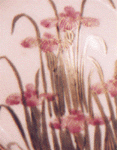It is a little known fact that Japanese tea actually originated from China during the Tang and Song dynasties. It was brought over to Japan by monks who studied in China. The main form of tea drunk by Japanese today is green tea or macha and it is in powder form. However, Japanese have cultivated the habit of drinking oolong tea from China' Fujian province as well.
Our purpose for the combination of Japanese tea and Chinese tea information in EasternTea.com can be summarized into four reasons:
 Firstly, both teas and tea culture come from the same root in China and by providing information on both entities back to back, we hope to provide an interesting perspective on East Asian tea culture as a whole. We also hope to provide products from both countries such as the famous biluochun from China and the Yame tea from Japan. By adding such products to our website, we yearn to provide a wide-ranging variety of products for consumers and web viewers alike.
Firstly, both teas and tea culture come from the same root in China and by providing information on both entities back to back, we hope to provide an interesting perspective on East Asian tea culture as a whole. We also hope to provide products from both countries such as the famous biluochun from China and the Yame tea from Japan. By adding such products to our website, we yearn to provide a wide-ranging variety of products for consumers and web viewers alike.
Secondly, there is no as much English information on Japanese tea as one would like to have. Thus, we have provided translation services for articles written in Japanese so that non-Japanese netizens as well as cyberspace customers can understand Japanese tea culture.
Thirdly, Japanese tea ceremony is one of the representative arts of Japan. This elaborate and philosophical art form is complex and not well understood by many in the world. Through our convenient user-friendly dictionary we hope to unravel Japanese tea phrases. In addition, we hope to provide more pictures and more explanation of such ceremonies. We hope to dazzle viewers by our wide array of pictures from kimonos used in the tea ceremony to tea tools. We even provide antique Japanese pieces so that viewers may see some of the rare pieces of Japanese tea tools hitherto concealed in the houses of fine arts collectors, museums and antique shops.
Fourthly, there is a wide array of tea tools that are necessary to conduct Japanese tea ceremony. As Japanese tea macha comes in a powder form it is necessary to whisk the powdered tea in a manner which allows the tea powder to dissolve in the tea bowl. This requires skilful manipulation of the tea whisk. We hope to detail all these information comprehensively in the website so that viewers may learn more about these forms of art. Besides the physical aspects of the tea ceremony, we discuss the philosophical meaning behind all the steps and procedures taken during the tea ceremony. It is another first to attempt to discuss the philosophy of Japanese tea such as wabi and sabi in cyberspace.
In conclusion, we hope that our tea website can be comprehensive and for this purpose we have invited Tea Prof Nakao Fumiko to provide us with additional and updated information about Japanese as much as possible. She is a tea master in the prestigious Omote Senke tea school, the first tea school that has a history of 2000 years originating from the grandmaster and founder of Japanese tea ceremony Sen No Rikkyu. Through her we hope to continually provide updated information and translate them into English for the benefit of our viewers.





